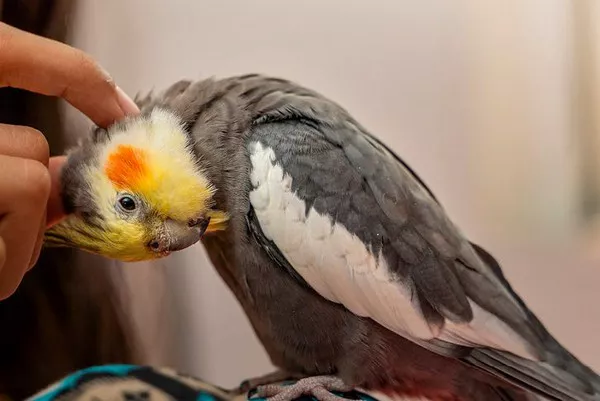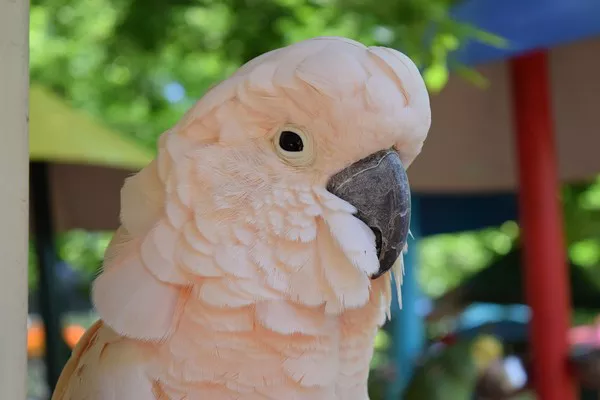Sun conures are among the most vibrant and social parrot species, loved by pet owners for their bright colors and playful personalities. If you’re a sun conure owner or planning to adopt one, you may wonder about their care, particularly when it comes to beak maintenance. One common question is whether sun conures need their beaks trimmed. The short answer is: usually, no. A healthy sun conure does not typically need regular beak trimming, but there are exceptions based on individual health, diet, and lifestyle. In this article, we’ll explore the details of sun conure beak health, the role of natural beak maintenance, and how to identify when intervention may be necessary.
Understanding the Beak Anatomy of Sun Conures
A sun conure’s beak is an essential tool for their daily life. It is not just used for eating; the beak also helps with climbing, playing, preening, and exploring their environment. The beak is made up of two parts:
The Upper Mandible – The curved top part of the beak.
The Lower Mandible – The flatter bottom part.
Both parts are covered with keratin, the same material that forms human nails and hair. This keratin grows continuously throughout the bird’s life. In the wild, natural activities such as foraging, gnawing on branches, and cracking seeds wear the beak down at a rate that matches its growth. In captivity, maintaining a healthy balance between growth and wear can sometimes require attention from the owner.
Do Sun Conures Need Beak Trimming?
In most cases, sun conures do not need their beaks trimmed. A healthy bird with a proper diet and access to toys or perches designed for chewing will naturally wear down its beak. However, there are exceptions to this rule.
Reasons a Sun Conure’s Beak May Need Trimming
Overgrown Beak:
An overgrown beak can occur due to health issues or improper wear. If left untrimmed, the bird may have trouble eating or performing normal activities.
Malocclusion (Misaligned Beak):
When the upper and lower mandibles don’t align properly, the bird cannot wear its beak down effectively.
Liver Disease:
Birds with liver disease, such as hepatic lipidosis, may develop abnormal beak growth because of how the condition affects keratin production.
Injury or Trauma:
If a sun conure damages its beak due to a fall or accident, it may need assistance while it heals.
Dietary Deficiencies:
A diet lacking essential nutrients like calcium and vitamin A can lead to poor beak health and abnormal growth.
Signs of Beak Problems in Sun Conures
It’s essential to know how to recognize when your sun conure’s beak isn’t in optimal condition. Some signs that indicate a potential issue include:
Overgrowth: The beak appears unnaturally long or pointy.
Peeling or Flaking: While minor flaking is normal, excessive keratin peeling can signal a problem.
Asymmetry: The beak is noticeably uneven or misaligned.
Difficulty Eating: Your bird struggles to crack seeds, bite into fruits, or chew food.
Cracks or Chips: Structural damage can compromise beak function.
Discoloration: Healthy beaks are smooth and uniform in color. Discoloration may indicate infection or illness.
If you notice any of these signs, consult an avian veterinarian promptly.
How to Maintain a Sun Conure’s Beak Naturally
Preventing beak issues is always better than treating them. Here are several ways to help your sun conure maintain a healthy beak naturally:
1. Provide a Nutritionally Balanced Diet
Diet plays a critical role in beak health. Sun conures require a mix of:
Pellets: High-quality pellets should make up the majority of their diet, as they provide balanced nutrition.
Fresh Fruits and Vegetables: Carrots, bell peppers, broccoli, and leafy greens supply vitamins like A and C, which are essential for keratin production.
Seeds and Nuts: These are more than just treats; cracking them mimics natural behaviors and helps wear down the beak.
2. Offer Chewable Toys
Chewable toys are vital for sun conures. They serve both as entertainment and a way to wear down the beak. Look for toys made from bird-safe materials like:
- Natural wood
- Coconut shells
- Cardboard
- Woven palm leaves
3. Install Natural Perches
Perches made from natural wood, such as manzanita or java, encourage your sun conure to gnaw and help keep their beak in shape. Avoid sandpaper perches, as they can cause irritation or injury.
4. Encourage Foraging
Foraging mimics the natural behavior of wild sun conures. You can create foraging opportunities by hiding treats or pellets in puzzle feeders, shredded paper, or small containers. This activity helps with mental stimulation and beak maintenance.
5. Regular Grooming and Observation
While most birds groom their beaks instinctively by rubbing them on perches or toys, it’s important to monitor your sun conure for signs of overgrowth or wear.
What Happens During a Beak Trimming Procedure?
If your sun conure requires a beak trim, it should always be performed by a trained professional, such as an avian veterinarian. Attempting to trim a bird’s beak at home is risky and can cause injury, stress, or long-term damage.
Here’s what to expect during a professional beak trimming:
Assessment: The vet will examine your bird’s beak to determine the underlying cause of the overgrowth.
Trimming: Using specialized tools like a rotary burr or file, the vet will carefully shape the beak to restore its functionality.
Sedation (if necessary): In some cases, light sedation may be required to keep the bird calm and prevent movement.
Follow-Up Care: The vet may recommend changes to diet or habitat to prevent future issues.
Risks of Improper Beak Trimming
Improper beak trimming can lead to serious complications, including:
Pain or Bleeding: The beak contains sensitive blood vessels and nerves. Incorrect trimming can cause injury.
Structural Weakness: Over-trimming may weaken the beak, making it prone to cracks or fractures.
Behavioral Stress: Birds are highly sensitive, and unnecessary or poorly performed trimming can lead to fear or aggression.
Preventing Beak Problems Through Regular Vet Visits
Routine check-ups with an avian veterinarian are critical for catching and addressing potential beak issues early. During these visits, the vet will:
- Check the alignment of the beak.
- Identify early signs of overgrowth, malocclusion, or discoloration.
- Provide tailored advice on diet and enrichment.
Regular veterinary care ensures your sun conure’s beak remains healthy without the need for trimming.
Special Cases: Beak Issues in Older or Disabled Birds
Some sun conures may have special needs as they age or due to disabilities. Older birds may become less active, reducing natural beak wear. Similarly, birds with physical disabilities may struggle to chew or climb. In these cases, owners must provide additional support through softer foods, frequent habitat adjustments, and regular vet monitoring.
Conclusion
Sun conures are delightful companions that usually maintain healthy beaks with proper care. Most do not need their beaks trimmed if they have a balanced diet, access to chewable toys, and opportunities for natural foraging. However, overgrown or misaligned beaks may require professional intervention.
By understanding the signs of beak problems and taking preventive measures, you can ensure your sun conure remains happy, healthy, and full of personality. Always consult an avian veterinarian for specific concerns about your bird’s beak health. With attentive care and regular monitoring, you and your sun conure can enjoy a long and fulfilling bond.
Related Topics:






















